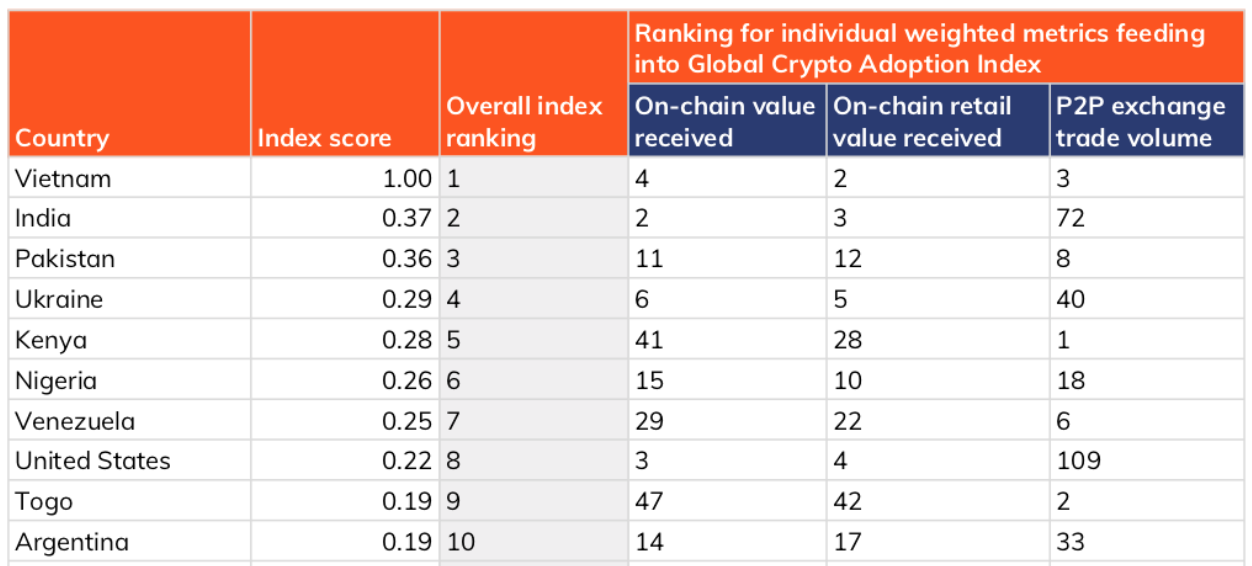2021 was a blockbuster year for the global blockchain sector, which saw funding activity surge, trading volumes balloon and further growth in key segments including custodians, exchanges, decentralized finance (DeFi), as well as non-fungible tokens (NFTs) and the metaverse, a new report by Swiss blockchain-focused investment company CV VC, in collaboration with PwC Switzerland, says.
The second installment of the Global Report series, released last week, provides an overview of the global blockchain ecosystem, outlining the main developments and trends observed in 2021.
Rising funding
The report highlights a surge in venture capital (VC) financing, which reached a new record of US$33 billion in 2021. The year also recorded the largest by blockchain VC deal count at over 2,000, almost double the previous year.
2021 was marked by large rounds of funding closed by growth stage startups, indicating that the industry is maturing. Funding activity mainly focused on crypto exchanges, fintech, and institutional servicing platforms with companies such as FTX, Celsius, Gemini, and Fireblocks closing large rounds. Startups tackling NFTs, Web3, decentralized autonomous organizations (DAOs) and the metaverse came second to the capital allocation, the report says.
Rising funding activity pushed valuations to new highs. In 2021, 40 blockchain startups reached unicorn status.

Crypto/blockchain VC deals, Source: Galaxy Digital Research, 2022
Crypto adoption grows
Booming funding activity came on the back of growing adoption of crypto assets by both institutional and retail customers.
According to Chainalysis, last year saw a staggering 881% rise in global crypto adoption, a growth that was driven largely by emerging markets including Vietnam, India and Pakistan where many customers turned to cryptocurrencies to preserve their savings in the face of currency devaluation, send and receive remittances, and carry out business transactions.
Adoption in North America, Western Europe, and Eastern Asia, meanwhile, was powered largely by institutional investment, the report says.

The 2021 Global Crypto Adoption Index Top 20, Source: Chainalysis, October 2021
In response, several leading financial service institutions took steps into the space in 2021, including Goldman Sachs, Morgan Stanley and BlackRock, which began offering wealth management clients exposure to and custody of digital assets.
Booming cryptocurrency trading volumes
Crypto trading volume increased strongly in 2021, reaching US$14 trillion. This represents a 689% increase compared to 2020.
Surging crypto trading volumes pushed crypto exchanges’ revenue, which grew by a staggering by over 600% to US$24.3 billion in 2021. The sum is 60% higher than the roughly US$15.2 billion brought in by traditional securities exchanges, like the New York Stock Exchange and the Nasdaq by 60%.
Data from financial services consultancy Opimas show that Binance remained the undisputed market leader in 2021 with a share of spot-market crypto trading volumes standing at 69%. The company reportedly raked in an estimated US$14.6 billion in trading fees last year.

Crypto spot exchanges: Share of annual transaction volumes, Source: Nomics, Opimas analysis, 2022
A burgeoning crypto custodian market
The custody industry, which includes services focusing on safeguarding crypto assets for private individuals, institutions, and enterprises, is another blockchain sub-sector that grew rapidly in 2021.
Custodians’ global AUM surpassed US$223 billion, and funding for companies in the space skyrocketed to US$4.5 billion. Signs of consolidation were also observed, with six providers being acquired in 2021 alone, reflecting the growth and maturing of the space.
Key players in the space include Ledger, one of the biggest and best-known service providers for digital asset self-custody, targeting primarily retail customers, Coinbase Custody, another major player with more than US$90 billion assets under custody or around 40% of the global crypto AUM, and BitGo, which is trailing closely behind Coinbase Custody with regards to AUM with an estimated US$64 billion from its clients under custody.
Fireblocks is another brand worth keeping in mind. With a US$8 billion valuation, Fireblocks is one of the industry’s giants, serving over 800 customers around the world and amassing US$45 billion worth of assets under custody.
Adoption of DeFi grows
In 2021, the DeFi sector, which encompasses financial instruments and products that use smart contracts on a blockchain to cut out intermediaries such as brokerages, exchanges, or banks, reached new highs as adoption continued to rise.
By the end of 2021, the top 100 DeFi coins by market capitalization reached a total valuation of US$149 billion, up about 500% from a year earlier at about US$ 25 billion, according to blockchain software technology company ConsenSys.

DeFi market cap 2021, Source: ConsenSys, 2022
In tandem, the number of DeFi wallets surged and reached a record with 4.3 million unique addresses in January 2022, more than tripling the number of unique addresses a year earlier (about 1.2 million addresses).

DeF addresses/wallets in 2021, Source: ConsenSys, 2022
Further indicative of the growth of DeFi is the rising trading volumes on decentralized exchanges (DEXs). In 2021, DEXs reported more than US$1 trillion in trading volumes, representing a 858% increase compared to 2020 DEX trading volumes, data from The Block Research show.

DEX volume, Source: The Block Research
NFTs and the metaverse
NFTs, which enable digital asset ownership to be unique and identifiable, have experienced an incredible rise. Total NFT sales volume hit US$23 billion in 2021, compared to less than US$100 million in 2020, according to data from DappRadar.
Growth and development in areas including cryptocurrencies, NFTs and DAOs, but also virtual reality (VR), artificial intelligence (AI) and cloud computing, will serve as the building blocks for future growth in a virtual world, the report says.
In the future, NFTs will serve as the gateway to a metaverse, empowering the identity, community and socialization the metaverse economy will be built upon.
The metaverse has emerged into one of the hottest trends in the tech sector. In 2021, more than US$10 billion in VC funding went towards the concept, against just US$5.9 billion in 2020, data from Crunchbase show.
Bloomberg Intelligence senior industry analysts project that the global metaverse revenue opportunity could approach US$800 billion in 2024 versus about US$500 billion in 2020.






